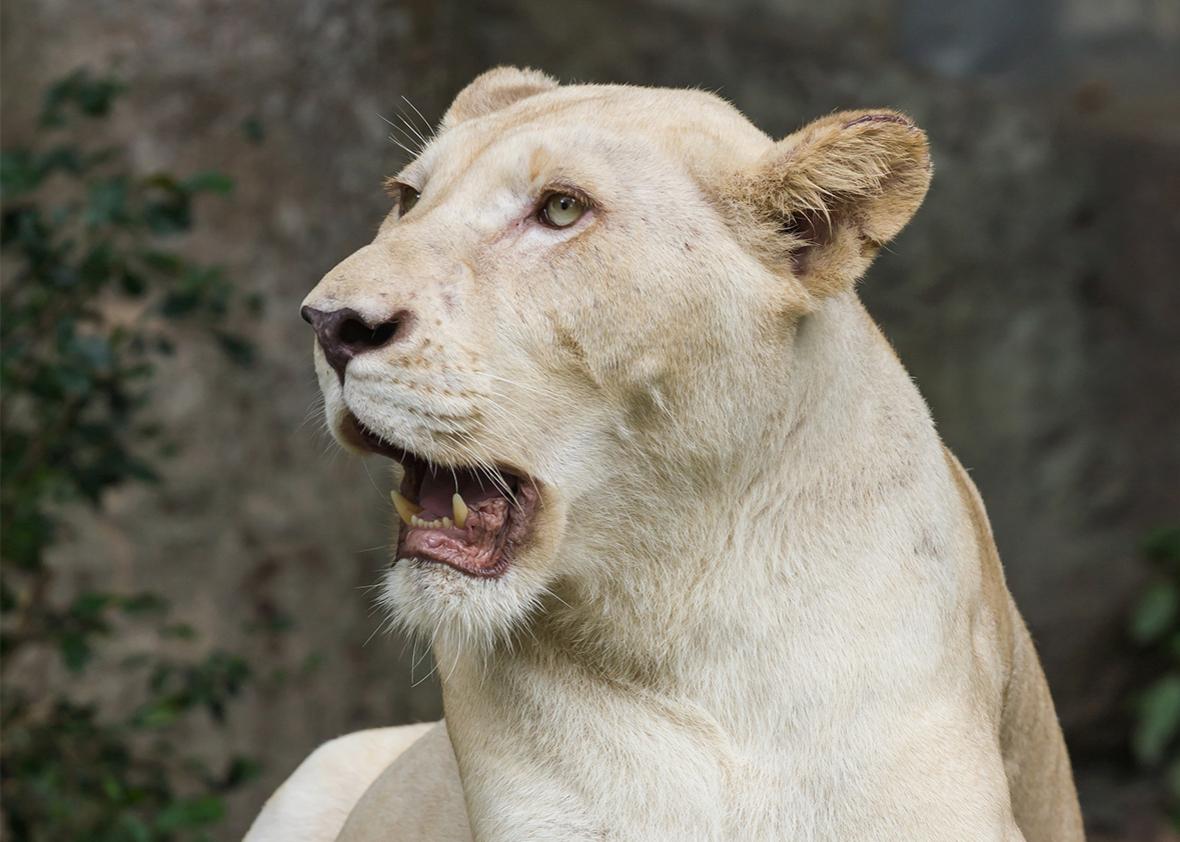A white lion was born in Lufkin, Texas, on Friday, and as just the second white lion cub to be born in a U.S. zoo, according to the Lufkin News, it’s getting plenty of attention. Unfortunately for the zoo, he may not stay that way. The first U.S.-born white lion cub, born in Omaha, Nebraska, in November, reverted to a blond color at around six months of age.
But how can an albino animal become un-albino? Well, it can’t. The reason the Omaha cub was able to change colors—and the reason to think the Texas cub will do the same—is that these white lions are not albino.
Instead, their unusual coloration is due to a distinct but related condition called leucism. To understand the difference, let’s start with some basics on how lions (and all vertebrates) get their color. During development, a structure called the neural crest forms near what will later become the spine of the animal. Cells that grow here will migrate and give rise to an almost unbelievable variety of cells, including melanocytes, cells which produce the pigment melanin.
For the white lions, it’s the migration that’s being interrupted by leucism. Their melanocytes are unable to migrate into the fur, where they’d normally create the golden color we expect lions to have, and we end up with the default color of white. If the animals were albino, they’d have melanocytes that could migrate normally but would be unable to produce any melanin.
While this distinction may seem arcane, it gives us an easy, reliable way to tell which condition the animal has: Look at the eyes. In animals with leucism, like the white lion, the eyes will be normal color. That’s because coloration in the eyes doesn’t need to migrate from the neural crest. Albino animals, on the other hand, will have red or pink eyes since all the melanin-producing cells are broken regardless of where they came from.
If your dog has spots, the migration problem is also at play. Partial leucism—in which some melanocytes migrate and others don’t—leads to interesting coat colors in domestic animals, like the piebald coloration in horses and pretty much all spotted patterns on dogs. Where the cells migrated, there’s a spot. Where they didn’t, there’s white space.
As for the lion cub in question, it is indeed possible the melanocytes will eventually migrate into the fur and the cub will go blond. We’ll just have to wait and see.
